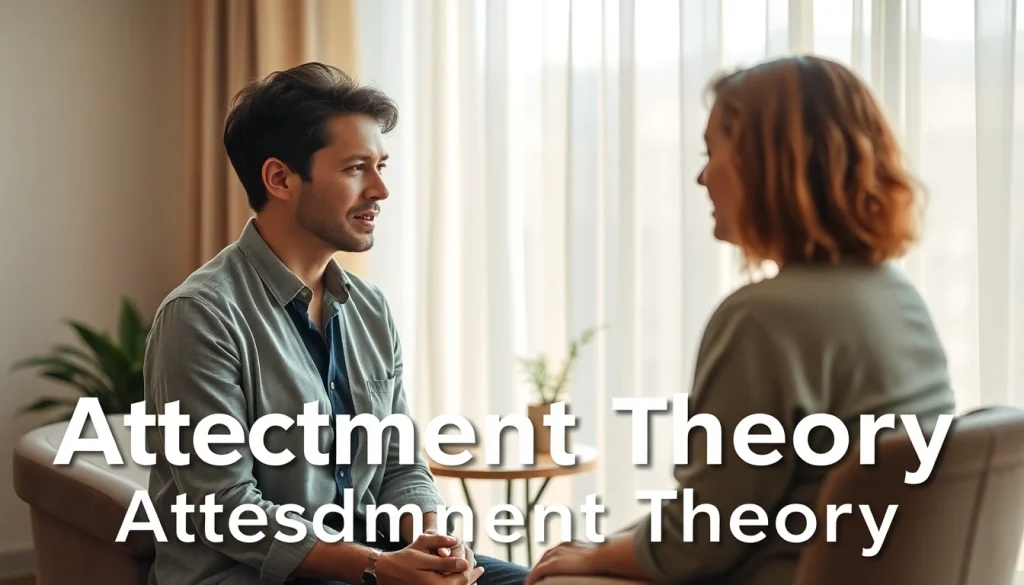
What is Attachment Theory?
Attachment theory is a psychological framework that explains how early emotional bonds between a child and their caregivers influence their emotional and relational development throughout life. Developed by British psychologist John Bowlby in the mid-20th century, this theory posits that the quality of attachment a child forms with their caregiver can have significant effects on their behavior, relationships, and mental health in adulthood. Understanding this theory is essential for both parents and mental health professionals, particularly for an attachment theory specialist.
The Origins of Attachment Theory
Bowlby’s interest in attachment theory was largely influenced by his observations of children separated from their families during World War II. His research emphasized the importance of a secure attachment figure for healthy emotional development. Mary Ainsworth later expanded Bowlby’s work through her Strange Situation study, identifying different types of attachment through a series of observed interactions within a controlled environment.
Key Concepts in Attachment Relationships
Central to attachment theory are several key concepts:
- Secure Base: The caregiver provides a secure base from which the child can explore the world.
- Internal Working Models: The mental representations of self and others formed through early attachments influence expectations in relationships.
- Attachment System: This is the innate behavioral system that drives children to seek proximity to their caregivers, particularly when they feel threatened or need comfort.
Importance of Attachment in Development
Attachment plays a crucial role in a child’s overall development. A secure attachment can foster confidence, emotional regulation, and resilience. In contrast, insecure attachments can lead to difficulties in emotional health, manifesting in various ways, such as anxiety, depression, or behavioral issues. Understanding these outcomes emphasizes the importance of supporting parents and caregivers in establishing secure attachment relationships.
Types of Attachment Styles
Attachment styles can be broadly categorized into four main types, each impacting how individuals relate to others throughout their lives.
Secure Attachment
Children with a secure attachment style typically have caregivers who are responsive and sensitive to their needs. As a result, these individuals tend to feel safe exploring their environments and can build healthy relationships in adulthood. Secure adults are generally more open to intimacy and able to communicate their feelings effectively, which can lead to fulfilling partnerships.
Avoidant Attachment
Individuals with an avoidant attachment style often encounter caregivers who are emotionally distant or unresponsive. Consequently, these individuals may struggle with intimacy, preferring independence or exhibiting withdrawal in relationships. Avoidant adults often minimize emotional expressions and can appear aloof or detached from their partners.
Anxious Attachment
Anxiously attached individuals usually have caregivers who are inconsistently available or overly intrusive. This unpredictability induces a heightened state of anxiety about relationships, leading these adults to seek excessive reassurance from partners. They may often fear abandonment and display clinginess or dependency in their romantic relationships.
Disorganized Attachment
The disorganized attachment style often arises from a caregiver’s frightening or erratic behaviors. Children with this attachment style may show conflicting behaviors—seeking comfort yet displaying fear toward their caregivers. In adulthood, this can result in unpredictable relational patterns and difficulties managing emotions, making professional guidance from an attachment theory specialist particularly beneficial.
Recognizing Attachment Issues
Recognizing issues related to attachment is essential for promoting emotional wellness. Many mental health concerns stem from unaddressed attachment-related issues.
Signs of Insecure Attachment
Signs of insecure attachment can manifest in various ways, including:
- Difficulty trusting others or allowing oneself to be vulnerable.
- Frequent conflicts in relationships stemming from fears of abandonment or intimacy.
- Prolonged feelings of low self-worth or anxiety in interpersonal contexts.
- Inconsistent or unpredictable emotional responses to relationship challenges.
Effects on Relationships
Individuals with insecure attachment styles can face numerous challenges in relationships. Avoidant individuals may struggle to open up emotionally, while anxious individuals may cling to partners out of fear of abandonment. These dynamics can lead to misunderstandings, conflict, and, ultimately, relationship dissatisfaction. Over time, such conflicts can erode trust and connection between partners, necessitating intervention from professionals trained in attachment theory.
Impact on Mental Health
Attachment issues can also lead to various mental health problems. Individuals with insecure attachments may experience higher rates of anxiety, depression, and difficulties with emotional regulation. They may engage in self-sabotaging behaviors and struggle with feelings of loneliness, even when in relationships. Understanding the roots of these issues can offer a pathway toward healing and recovery.
Role of an Attachment Theory Specialist
An attachment theory specialist is well-equipped to help individuals navigate the complexities of their attachment styles and work towards healthier relationships.
What to Expect in Therapy
During therapy, clients can expect a safe and supportive environment in which they explore their attachment styles and their effects on current relationships. Specialists often use a combination of talk therapy and experiential techniques to help clients process their emotions and develop healthier coping strategies. Key tools may include guided self-reflection, attachment-based interventions, and role-playing exercises aimed at fostering secure relationships.
Specialized Techniques for Healing
Several evidence-based therapeutic techniques can be particularly beneficial:
- Emotionally Focused Therapy (EFT): This approach focuses on identifying and transforming negative patterns of interaction in relationships, helping partners reestablish emotional bonds.
- Attachment-Based Therapy: This method emphasizes understanding one’s own attachment patterns and working to develop more secure attachments through validating and repairing past relational wounds.
- Mindfulness Techniques: Mindfulness practices can aid individuals in becoming aware of and regulating their emotional responses, contributing to healthier relational dynamics.
Finding the Right Specialist for You
Choosing the right attachment theory specialist is critical for effective intervention. Look for professionals who provide a supportive, empathetic environment. Credentials and experience in attachment theory, as well as positive client testimonials, can serve as important indicators of a good fit. Consider discussing both theoretical approaches and practical outcomes with potential therapists before making a decision.
Resources and Further Reading
For those interested in deepening their understanding of attachment theory and its implications, a variety of resources are available.
Books on Attachment Theory
Books provide an insightful way to explore attachment theory in detail. Notable recommendations include:
- “Attached” by Amir Levine and Rachel Heller: A user-friendly guide to understanding attachment styles and navigating relationships.
- “The Body Keeps the Score” by Bessel van der Kolk: This work delves into how trauma affects attachment and emotional health.
- “Hold Me Tight” by Dr. Sue Johnson: An exploration of how attachment theory informs romantic relationships and offers pathways to intimacy.
Online Courses and Workshops
Many organizations now offer online resources and workshops aimed at understanding and applying attachment theory principles. Practical training can often enhance one’s knowledge and effectiveness in both personal and professional contexts.
Professional Organizations and Support Networks
Joining professional organizations such as the American Psychological Association or the Attachment Theory Network can provide valuable resources, networking opportunities, and continued learning for those interested in attachment theory.






